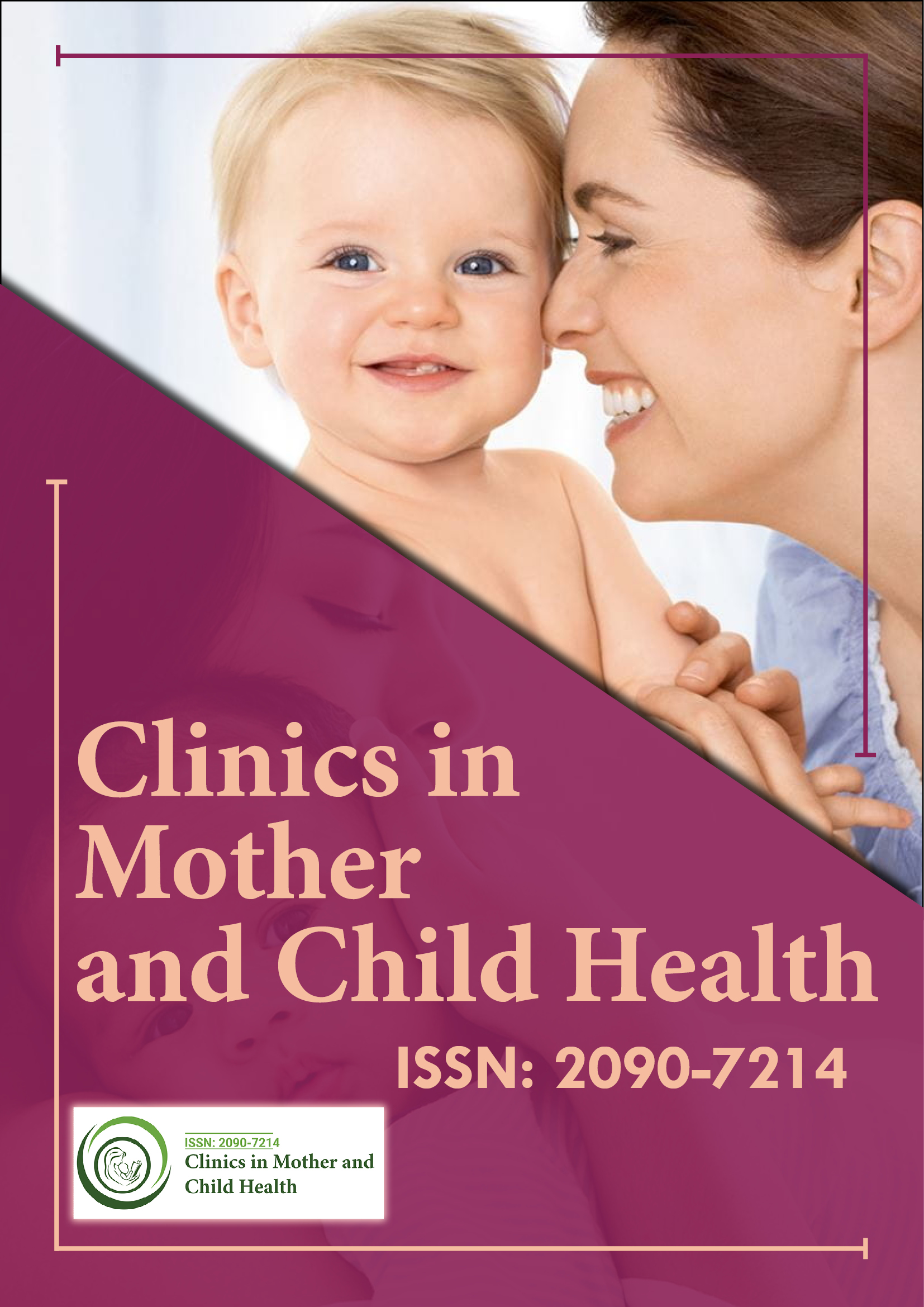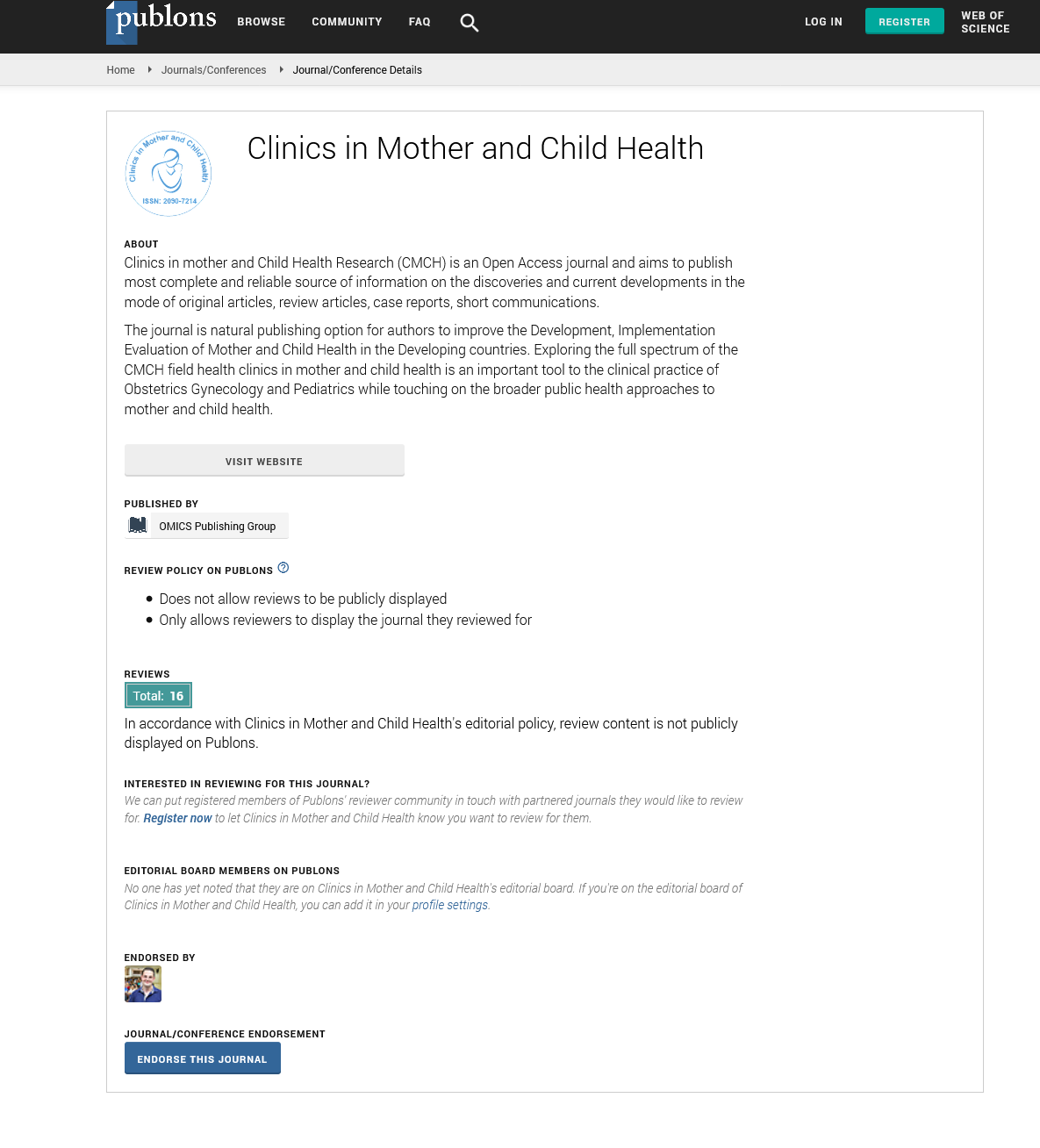Indexed In
- Genamics JournalSeek
- RefSeek
- Hamdard University
- EBSCO A-Z
- Publons
- Geneva Foundation for Medical Education and Research
- Euro Pub
- Google Scholar
Useful Links
Share This Page
Journal Flyer

Open Access Journals
- Agri and Aquaculture
- Biochemistry
- Bioinformatics & Systems Biology
- Business & Management
- Chemistry
- Clinical Sciences
- Engineering
- Food & Nutrition
- General Science
- Genetics & Molecular Biology
- Immunology & Microbiology
- Medical Sciences
- Neuroscience & Psychology
- Nursing & Health Care
- Pharmaceutical Sciences
Opinion Article - (2024) Volume 0, Issue 0
Impact of Vascular Alterations on Maternal and Fetal Outcomes in Preeclampsia
Joshua Reisman*Received: 20-Nov-2024, Manuscript No. CMCH-24-28154; Editor assigned: 22-Nov-2024, Pre QC No. CMCH-24-28154(PQ); Reviewed: 10-Dec-2024, QC No. CMCH-24-28154; Revised: 17-Dec-2024, Manuscript No. CMCH-24-28154(R); Published: 24-Dec-2024, DOI: 10.35248/2090-7214.21.S27.005
Description
Placental ischemia is a primary driver of vascular alterations in preeclampsia. Reduced uteroplacental perfusion due to abnormal placental implantation and spiral artery remodeling leads to hypoxia and oxidative stress. The hypoxic placenta releases anti-angiogenic factors and pro-inflammatory cytokines into the maternal circulation, triggering systemic endothelial dysfunction and vascular damage. Managing preeclampsia involves a multidisciplinary approach to minimize both maternal and fetal risks. Early identification and monitoring are important. For women at high risk of developing preeclampsia, low-dose aspirin therapy initiated in the first trimester has shown promise in reducing the incidence of the disorder. Calcium supplementation is another preventive measure that has demonstrated benefits in reducing the risk of preeclampsia, particularly in populations with low dietary calcium intake. The disorder is marked by a multi-system involvement, with vascular dysfunction playing a pivotal role in its development and progression. Understanding the vascular alterations in preeclampsia is essential for early diagnosis, effective management and improving maternal and fetal outcomes. Endothelial cells line the interior of blood vessels and play a critical role in vascular homeostasis. In preeclampsia, endothelial dysfunction is a hallmark feature. This dysfunction is characterized by impaired vasodilation, increased vascular permeability and a pro-inflammatory state. The endothelium fails to produce adequate amounts of nitric oxide, a potent vasodilator, leading to vasoconstriction and hypertension. Angiogenesis, the formation of new blood vessels, is esential for placental development and function. In preeclampsia, there is an imbalance between pro-angiogenic and anti-angiogenic factors. Specifically, the levels of Vascular Endothelial Growth Factor (VEGF) and Placental Growth Factor (PlGF) are reduced, while levels of Soluble Fms-Like Tyrosine Kinase-1 (sFlt-1) are elevated. This imbalance inhibits angiogenesis, contributing to placental insufficiency and fetal growth restriction. The coagulation system is often activated in preeclampsia, leading to a hypercoagulable state. Elevated levels of pro-coagulant factors and decreased levels of anticoagulant proteins, such as antithrombin III, are commonly observed. This can result in the formation of microthrombi, particularly in the placenta, contributing to placental insufficiency and adverse fetal outcomes. Oxidative stress, resulting from an imbalance between Reactive Oxygen Species (ROS) production and antioxidant defenses, is a significant contributor to endothelial dysfunction in preeclampsia. Elevated levels of ROS cause damage to endothelial cells, impairing their ability to regulate vascular tone and permeability. Preeclampsia is associated with a heightened inflammatory response. Increased levels of pro-inflammatory cytokines, such as Tumor Necrosis Factor-Alpha (TNF-α) and Interleukin-6 (IL-6), promote endothelial activation and vascular damage. The inflammatory milieu further exacerbates oxidative stress and angiogenic imbalance. Genetic predispositions and epigenetic modifications can influence the susceptibility to preeclampsia and its associated vascular alterations. Variants in genes encoding for angiogenic factors, inflammatory mediators and oxidative stress regulators may contribute to the development of the disorder. The vascular alterations in preeclampsia significantly contribute to maternal morbidity and mortality. Endothelial dysfunction and hypertension can lead to severe complications, including eclampsia (seizures), HELLP syndrome (hemolysis, elevated liver enzymes and low platelet count) and multi-organ failure. Prompt recognition and management of these complications are critical to improving maternal outcomes. Impaired angiogenesis and placental insufficiency result in reduced nutrient and oxygen supply to the fetus, leading to fetal growth restriction. Babies born to mothers with preeclampsia are at higher risk of low birth weight, preterm birth and perinatal morbidity and mortality. Regular prenatal care and early detection of preeclampsia are essential for timely intervention. Low-dose aspirin and calcium supplementation may also be recommended for high-risk women to reduce the risk of developing preeclampsia.
Conclusion
Postpartum follow-up is critical for women with a history of preeclampsia. Regular cardiovascular assessments, blood pressure monitoring and lifestyle counseling can help mitigate long-term cardiovascular risks. The pathophysiological insights into preeclampsia have evolved significantly over the years, shedding light on the molecular mechanisms that drive vascular alterations and dysfunction. One critical pathway involves the imbalance between angiogenic and anti-angiogenic factors. This inhibition disrupts normal angiogenesis, leading to endothelial dysfunction and increased vascular permeability. Monitoring blood pressure, proteinuria and fetal growth can help identify preeclampsia early and initiate appropriate management. Antihypertensive medications, such as labetalol and nifedipine, can be used to manage blood pressure in women with preeclampsia.
Citation: Reisman J (2024). Impact of Vascular Alterations on Maternal and Fetal Outcomes in Preeclampsia. Clinics Mother Child Health. S27:005.
Copyright: © 2024 Reisman J. This is an open-access article distributed under the terms of the Creative Commons Attribution License, which permits unrestricted use, distribution, and reproduction in any medium, provided the original author and source are credited.

